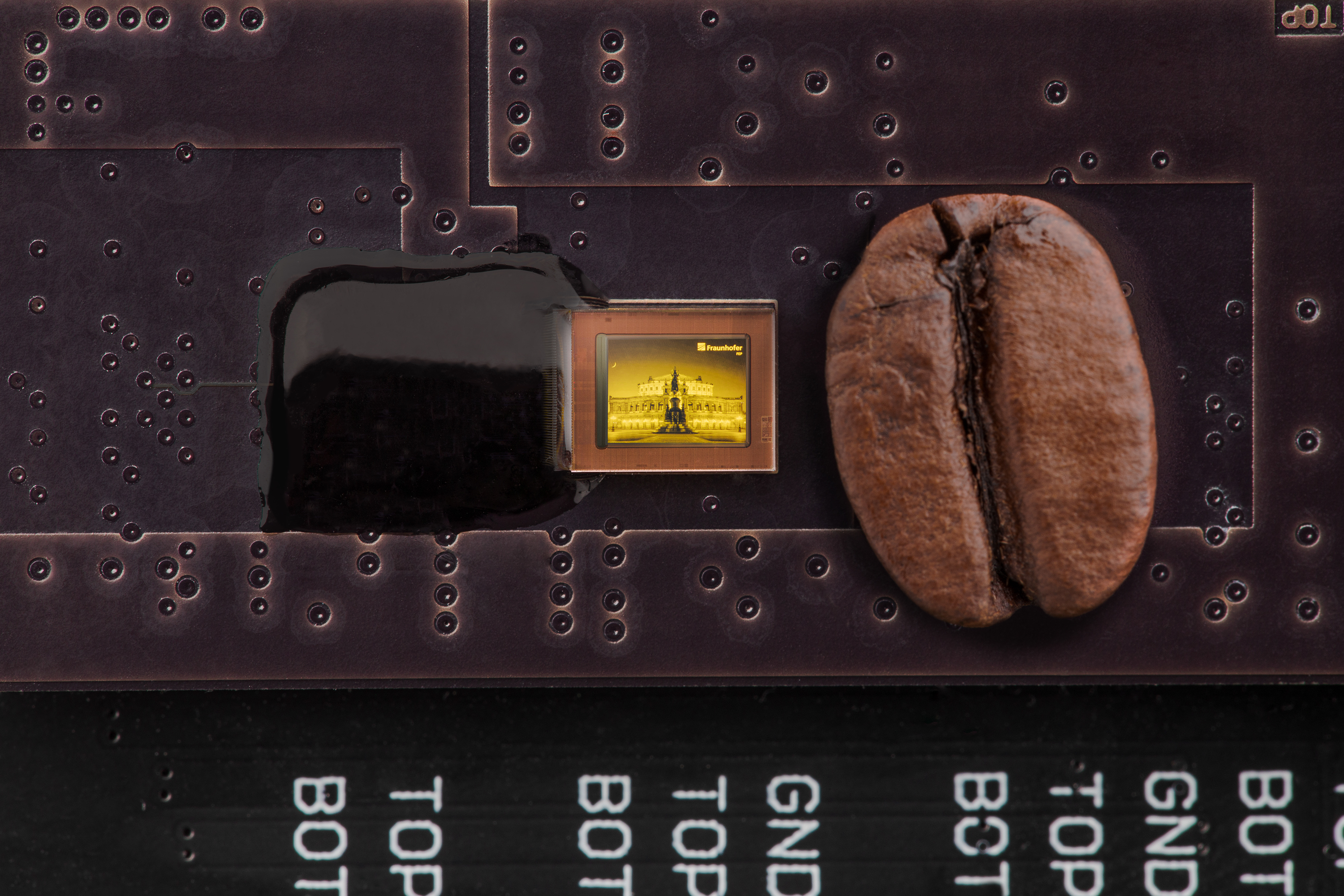Pooling expertise, leveraging synergies
Integration of Fraunhofer FEP's Microdisplays and Sensors business unit into Fraunhofer IPMS
The Microdisplays and Sensors business unit at the Fraunhofer Institute for Organic Electronics, Electron Beam and Plasma Technology FEP will be integrated into the Fraunhofer Institute for Photonic Microsystems IPMS with retroactive effect from January 1, 2024. Both institutes are closely connected, particularly within this business unit, and share infrastructure at the Dresden site. By pooling expertise and streamlining structures, we anticipate the creation of synergies that will strengthen the research field, expedite development and thus benefit customers and partners.


There is rapid development in the market for the microdisplays used in augmented reality (AR), virtual reality (VR) and mixed reality (MR) applications (often collectively referred to as XR) and this will be an important growth market of the future. The integration of OLED and µLED frontplane technologies in CMOS backplanes is not only the key to success in this sector but also the technological basis for near-to-eye visualization of information. Fraunhofer IPMS and Fraunhofer FEP have now decided, in consultation with the Fraunhofer-Gesellschaft, to integrate the Fraunhofer FEP Microdisplays and Sensors business unit into Fraunhofer IPMS. Their goal is to leverage synergies in the area of infrastructure, pool expertise and establish a unique profile for both institutes. Fraunhofer IPMS has long been one of the leading institutes in microelectronics and microsystems engineering.
Over the past ten years, the Microdisplays and Sensors business unit has developed into a globally successful and established player under the umbrella of Fraunhofer FEP. At the current stage of development, the transfer to an institute specialized in microelectronics offers suitable conditions to further develop the business unit. This will also allow Fraunhofer FEP, as a process-oriented institute, to focus even more on its expertise in electron beam and plasma technology. This transfer provides technological solutions for the growing demand in the fields of energy, sustainability, life sciences and environmental technologies for industry and society – now and in the future.
“By integrating the Fraunhofer FEP Microdisplays and Sensors business unit into Fraunhofer IPMS, we are pooling our expertise and ensuring the best possible use of our infrastructure. This will also increase our chances to win projects with the Microelectronics group. The transfer is a good example of the strategic development of a research field and the leveraging of synergies across institutes,” says Prof. Holger Hanselka, President of the Fraunhofer-Gesellschaft. “This will strengthen the research field and pave the way for new technological capabilities in the field of microdisplays by leveraging the synergies of the existing microelectronics infrastructure. The close relationship of the institutes at the Dresden site will ensure seamless and continuous advancement in this field. My special thanks go to all those involved for their contributions.”
Harald Schenk, Director of Fraunhofer IPMS, added: “In the future, Fraunhofer IPMS will increase its activities in this area and focus more on the heterogeneous integration of various chiplet technologies in conjunction with CMOS microelectronics. This future-oriented technology includes the integration of organic semiconductors (e.g., OLEDs) and novel emitter technologies (e.g., µLEDs), which will open up new avenues in micro/optoelectronics and microsystems engineering.”
Elizabeth von Hauff, Director of Fraunhofer FEP, said: “The Microdisplays and Sensors business unit has played a significant role in Fraunhofer FEP’s dynamic development. We are proud of this and would like to thank our employees and managers for their dedication. Transferring to Fraunhofer IPMS will open up additional development potential for the business unit and enable Fraunhofer FEP to focus on strategic topics in the field of electron beam and plasma technologies.”
About Fraunhofer FEP
The Fraunhofer Institute for Organic Electronics, Electron Beam and Plasma Technology FEP focuses on the development of innovative solutions, technologies and processes for surface finishing. This work is based on the institute’s expertise in the fields of electron beam technology, plasma-assisted large-area and precision coating, roll-to-roll technologies and the development of key technological components.
Fraunhofer FEP thus offers a broad spectrum of research, development and pilot production options, especially for the treatment, sterilization, structuring and refinement of surfaces but also liquids and gases.
About Fraunhofer IPMS
The Fraunhofer Institute for Photonic Microsystems IPMS is one of the leading research and development service providers in the application fields of intelligent industrial solutions and manufacturing, medical technology and health, and mobility. Research focuses on miniaturized sensors and actuators, integrated circuits, wireless and wired data communication and customized MEMS systems. In state-of-the-art clean rooms, the institute researches and develops solutions on 200 mm and 300 mm wafers. Services range from consulting and process development to pilot production.
 Fraunhofer Institute for Electron Beam
Fraunhofer Institute for Electron Beam